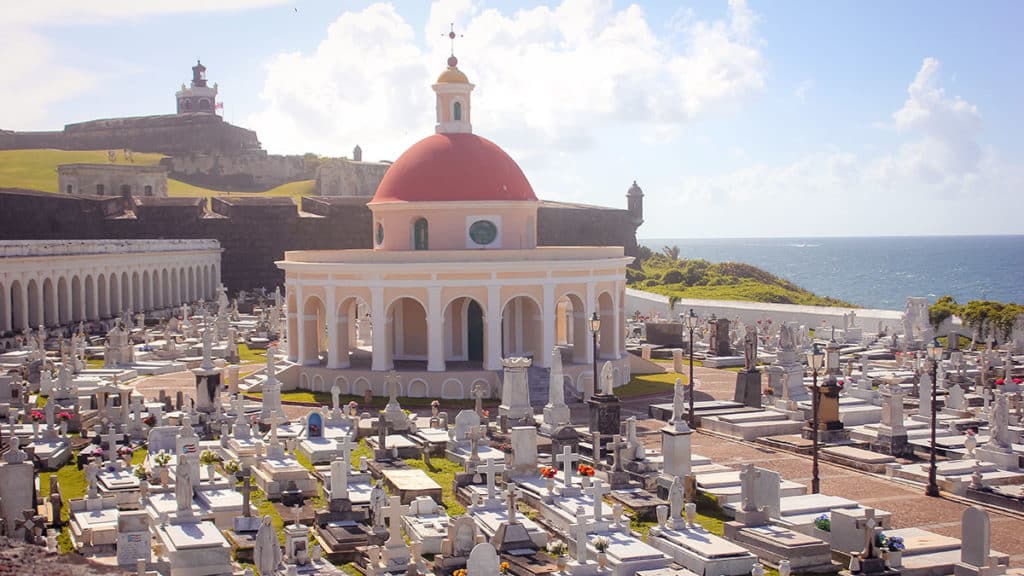In the Caribbean, Yewá is a warrior orisha of fertility, chastity, loneliness, and death. She doesn’t cause death, she helps us get through it. She has other meanings in Mother Africa.
[NOTE: These are oral traditions that vary by region, town, and even family. We don’t do religion. This is culture, a very beautiful one. It’s a Caribbean framework for understanding the mysteries of life.]
Characteristics of Yewá
Yewá manifests in life as a virginal, very old woman. She represents purity, wears pink, and lives in the cemetery where she is said to dance on the graves.
She is a good friend of Babalú-Aye, the orisha of epidemics and healing. She carries the eggun (souls of our ancestors) from Babalú-Aye to Oyá, the orisha of death and rebirth, and also wind and lightning storms (In Indigenous Tainó tradition, Atabey is just like Oyá).
Yewá’s number is 11 and multiples. 11 is a prime number. It cannot be divided.
You should not fool around or misbehave in front of Yewá (in the cemetery). She’s an old, fearless woman who won’t put up with any bad behavior.
In the Caribbean, Yewá is syncretized (blended) with:
- La Virgen de los Desamparados (Virgin of the Forsaken), the patron saint of Valencia, Spain.
- La Virgen de Monserrate (Our Lady of Montserrat), the patron saint of Catalonia, Spain.
Syncretization was cleverly done to protect African Diaspora culture by pretending to venerate the Colonizer’s culture. These traditions survived 500 years at home.
We Don’t Fear Death
It should be said that while the European Diaspora fears death, most of the rest of the world doesn’t. Death is the only certainty in life. We all do it.
In the European context, the Greek Charon, ferryman of Hades, plays a similar role helping people cross the river Acheron or Styx into the afterlife. The similarities between the Yoruba and Greek pantheons are striking.
There is nothing scary or bad here. Yewá is a helper. If she dances on your grave, it’s to help you move on.
Dahomey Origins
Yewá is an orisha in the Yoruba pantheon who comes from Dahomey (Fon) tradition (Benin/Haiti/New Orleans and the Caribbean).
Dahomey traditions dominated the Caribbean during the early Colonial Period when the Fon people were subjects of the Oyo Empire (the last great Yoruba empire). Yoruba traditions came to dominate the Caribbean after Dahomey defeated Yoruba Oyo. Dahomey is gone now. It’s Benin.
Most Americans know orisha traditions through Cuban Yoruba. What Cubans and Americans call Yoruba today is actually a blend of Dahomey, African Yoruba and Kongo traditions under the umbrella of the Yoruba pantheon. In Cuba, the only remaining difference is some traditional dances.
The Dahomey religion is Vodun, or in New Orleans, Voodoo. Most Americans have been taught to fear Voodoo by the scary stories written by US Army soldiers after the American occupation of Haiti (1915-1934). Many of those former soldiers got book and movie deals. Zombies derive from this tradition. The scary stuff is Hollywood nonsense.
Priests and nuns often teach that Voodoo is evil. It’s not. That’s just a competitive rant that anything but “my” religion is evil. Shame on religious people for not recognizing other religions. It’s all the same thing.
Vodun is the official religion of Benin and Haiti. Haitian Méringue and Dominican Merengue are not religious, but derive from Vodun ceremonial dancing. So does Blues and Jazz because in 1810, half of New Orleans was Haitian Diaspora. ¿Quieres bailar?
In Mother Africa
In Mother Africa, Yewá is a water spirit and associated with fertility. It makes sense when you consider that water is life (amniotic fluid), and a traditional role of women is to bear children. Those who don’t may end up sad and alone in old age. So young women pray to Yewá to make them fertile.
The Yewa River is on the border between modern Benin and Nigeria. The Yewa people there (formerly Ẹgbado) are a Yoruba subgroup. It’s difficult to untangle Fon and Yoruba because they live next to each other and are closely related.
Yewá, Yemayá and Oshún represent different phases in a woman’s life:
- Oshún is the young woman (though she is strong too).
- Yemayá is the mature mother figure.
- Yewá is the aged woman figure.
In Haiti and New Orleans
In Haiti and New Orleans, Yewá is known as Maman Brigitte, the Loa (spirit or saint) of the Dead. She is the wife of Baron Samedi, the Loa of death.
In Puerto Rico
Today in Puerto Rico, the faithful call their tradition Yoruba. Cuban Yoruba traditions came to Puerto Rico during the Cuban Revolution in 1959 when Cuba’s top Babalawo (Yoruba priest) moved to Borikén.
But the older African Diaspora tradition in Puerto Rico is Dahomey. You see it in the dance. Salsa is popular in the cities, but Merengue remains strong in the small towns and Puerto Rico has its own Merengue stars.
In Puerto Rico, Dahomey traditions blended with European Spiritualism and Indigenous Taíno traditions into Puerto Rican Espiritismo. Puerto Rico’s most famous cultural festival is Las Fiestas de la Calle San Sebastian. It’s nickname is the “SanSe.” Sanse is code for Vodun. It’s right in front of our face, but most of us don’t know.
We struggled to find an image that represents Yewá, so we looked in the cemeteries. Look who we found in the Old San Juan cemetery (Cementerio Santa María Magdalena de Pazzis).
Many of us focus on Yewá’s relationship with death, when in fact, she is an orisha of life. Life creates death and death creates life. It’s the great mystery.
¡Maferefún Yewá!

